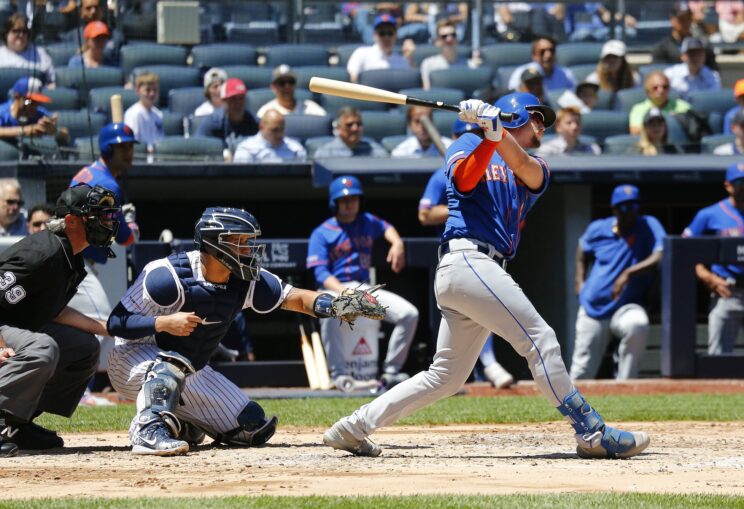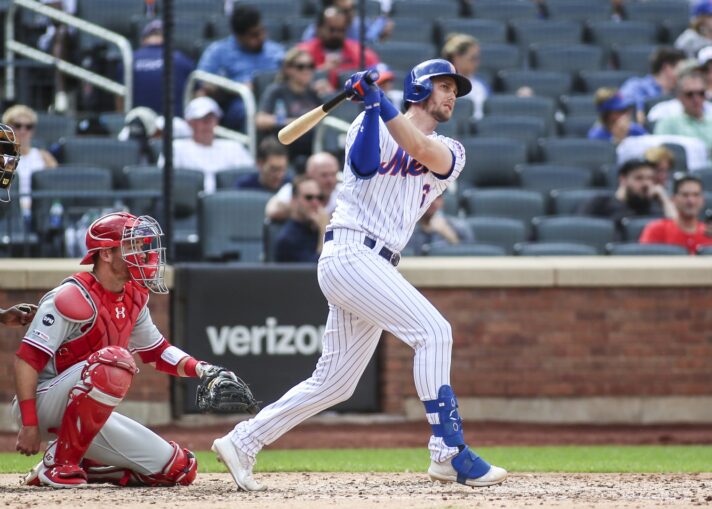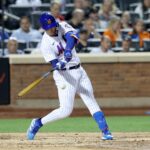
Jeff McNeil hasn’t stopped hitting baseballs since he was drafted in the 12th round of the 2013 MLB draft. His contact ability was never in question; the only offensive concern facing him was if he could produce enough pop to develop into a major-leaguer.
The left-handed hitter quieted those concerns with his cup of coffee in 2018 and completely quashed them with an outstanding 2019 campaign that saw him finish in the top-20 in the MLB in wOBA and wRC+.
How did Jeff McNeil develop into one of baseball’s most prolific offensive threats? Simply put, McNeil’s one of baseball’s most frequent swingers.
McNeil swung at the highest percentage of pitches in 2019 (59.9%), but that one number doesn’t even tell the whole tale.
His 2019 Z-Swing Percentage (percentage of swings inside the strike zone) was 85%, first in the Majors by over two percentage points and above the MLB average by 14.6 percentage points. When McNeil got pitches in the strike zone, he didn’t miss them as indicated by his .425 wOBA on those types of pitches, good enough for 19th in the Majors.
He also had the sixth-highest O-Swing percentage (percentage of swings on pitches outside the strike zone) in 2019. His O-Contact percentage (percentage of times he made contact with pitches outside of the strike zone) sat at 71.5%, eight points higher than the league average mark.
While he didn’t go much with those pitches (.331 wOBA, 64th in the Majors), he still made contact with them; his chase contact percentage was 67.6%, eight percentage points higher than the league-average.
So what does this tell us? McNeil’s really good at making contact on pitches outside of the strike zone, but his contact on pitches off of the strike zone needs improvement.
His .331 wOBA was only 64th in the Majors on pitches located outside the strike zone. Much of his contact was characterized as poorly hit/flares (.278 wOBA).
A key to McNeil’s success was his aptitude at attacking the first pitch during his at-bat. While his first-pitch strike percentage was only 64.5%, 49th in baseball, he made it count, slashing .421/.436/.935 on first pitches.
In particular, his damage occurred on first-pitch fastballs. 63.9% of the time in 2019, pitchers threw McNeil a first-pitch fastball. Big mistake.
On first-pitch fastballs, the lefty collected 30 hits in 71 at-bats, good enough for a .423 batting average, and registered an almost unreal .504 wOBA.
Fastballs were his bread-and-butter this season, with his .407 wOBA on fastballs placing him top on the team and 34th in the Majors. FanGraphs rated his value on hitting fastballs (wFB) at 18.6, similarly finishing first on the team and 33rd in the league. My colleague Matt Musico recently analyzed McNeil’s approach against fastballs here.
A better approach to offspeed deliveries could allow him to enjoy an even stronger season in 2020.

Looking at his Swing Take Profile (for a full explanation click here) it’s even more clear McNeil is more of a swing-now-worry-later type of player. His swinging percentage in the Heart and Shadow regions of the plate were both well above-average.
That strategy worked for him in the heart zone, as he recorded a +11 run value and +14 swing run value in 2019. His .620 wOBA on pitches in the heart zone placed him 29th in the Majors.
However, in the shadow zone, that strategy didn’t do so well as evident by his -5 run value and -9 swing run value. He swung 18% more than the average player, but still posted below-average swing results.
Clearly, McNeil’s doing damage on everything that’s in the middle of the plate but isn’t doing as well on pitches that are within the edge of the strike zone. If he learns to control his swinging tendencies, 2020 could be the best season of McNeil’s career yet.
















